
Pamukkale, which has a unique natural beauty, is one of the must-see places in Turkey. Although Pamukkale is famous for its travertine-covered thermal pools, it actually offers much more than that to its visitors. I have compiled all the details about Pamukkale. Pamukkale, which has a history of thousands of years, has the ancient city of Hierapolis. You can see the Temple of Apollo, the Great Theater and the Necropolis in the ruins of Hierapolis. Pamukkale is a town in Denizli. It is 22 kilometers away from the center; It is located near the Büyük Menderes River where the Çürüksu Stream is born.
Pamukkale History
The history of the Ancient City of Hierapolis dates back to the Ancient Greek period. The discovery of the cult of the Mother Goddess shows that the history of the city dates back to ancient Anatolian civilizations. At that time, the name of the city was not yet Hierapolis. The ancient geographer Strabo states that Hierapolis was located in the Caria region, near Laodikeia and Tripolis. According to the works of Strabo, the history of the city of Hierapolis dates back to the Phrygian period. Although the settlement in the city dates back to earlier periods, the city was officially founded by the King of Pergamon II. It is known that it was founded by Eumenes and took its name from an Amazon queen named Hiera. The structures, objects and other finds in this ancient city prove that Hierapolis was an important cultural and religious center.
The ancient city was built and designed in the Hellenistic style and remained the same until an earthquake during the reign of Emperor Nero. After the earthquake, it was rebuilt in Roman style and turned into a typical Roman Empire city. Hierapolis, which was an important center during the Roman period, preserved this feature during the Byzantine period.
During the Byzantine (Eastern Roman) period, when Christianity was on the rise, Hierapolis was considered one of the holy cities. Because it was believed that Saint Philip, one of the apostles of Jesus, died here.
Pamukkale Works
The Great Theater is the pearl of the ruins in Pamukkale. Hierapolis Antique Theater, which has a history of 1800 years, stands out as one of the best preserved Roman structures around the Mediterranean. In addition, the original examples of the Bergama art school can be seen in this theater. The reliefs you can see in the Ancient City of Hierapolis show that gladiator fights were held in this theater. Cleopatra’s Antique Pool offers a unique environment for those who come to Pamukkale. The pool filled with ancient columns and ruins is an experience that culminates in a visit to the ruins of Hierapolis. Swimming in Cleopatra’s Ancient Pool is among the popular things to do in Pamukkale in 2022. Pamukkale Archeology Museum is the place where the artifacts found in the excavations in the ancient city of Hierapolis are exhibited. There are wonderful sarcophagi and statues symbolizing Pamukkale’s Greco-Roman past. If you like history, Pamukkale Archeology Museum, where historical artifacts collected from the ancient city are exhibited, may also be of interest to you. Hierapolis was a place where miracles were believed to happen in ancient times. Although it may seem like a myth at first glance, the clergy of this city were known as the immortal priests of Hierapolis. There were caves in the city that were believed to be the gates of hell. These caves were seen as passages to the underworld, and animals about to be sacrificed would be brought down and die without any human contact. This phenomenon is explained by a poisonous gas released in caves.
On the other hand, it is recorded in historical sources that the monks who entered these caves to sacrifice animals returned unharmed. Moreover, Strabo confirms this situation and tells that the monks will stick their heads inside the gate of hell and they will not be affected by the gas.
According to an article published in Archeological Sciences in 2018, this phenomenon can be explained by the fact that the monks were aware of the chemical atmosphere in the cave. Pfanz, one of the paper’s co-authors, explains that the monks knew that the gas they called deadly breath could not exceed a certain limit. The monks also knew when the gas was most intense and the limit it would reach. Therefore, they performed the sacrificial rites accordingly.
The best time to visit Pamukkale
There is no sea near Pamukkale, so the climate is harsh and not very pleasant. The best time to come here is from April to June or September to November. Summer is generally very hot and dry here because the town is far from the sea. In winter, it rains a lot, and in spring and fall, there is often fog.
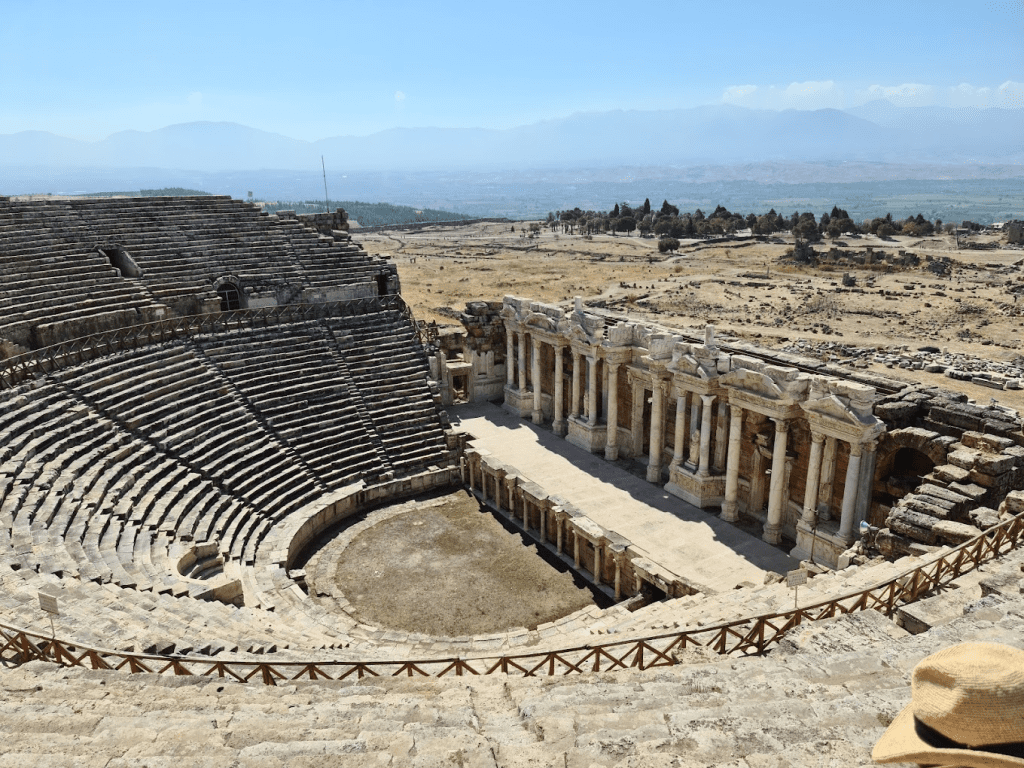
Pamukkale theater
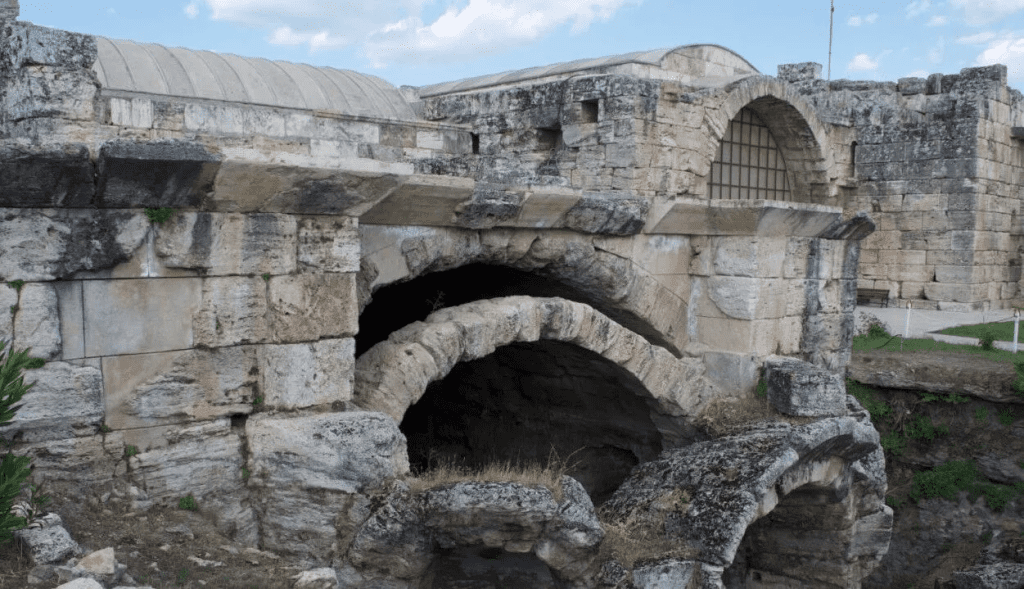
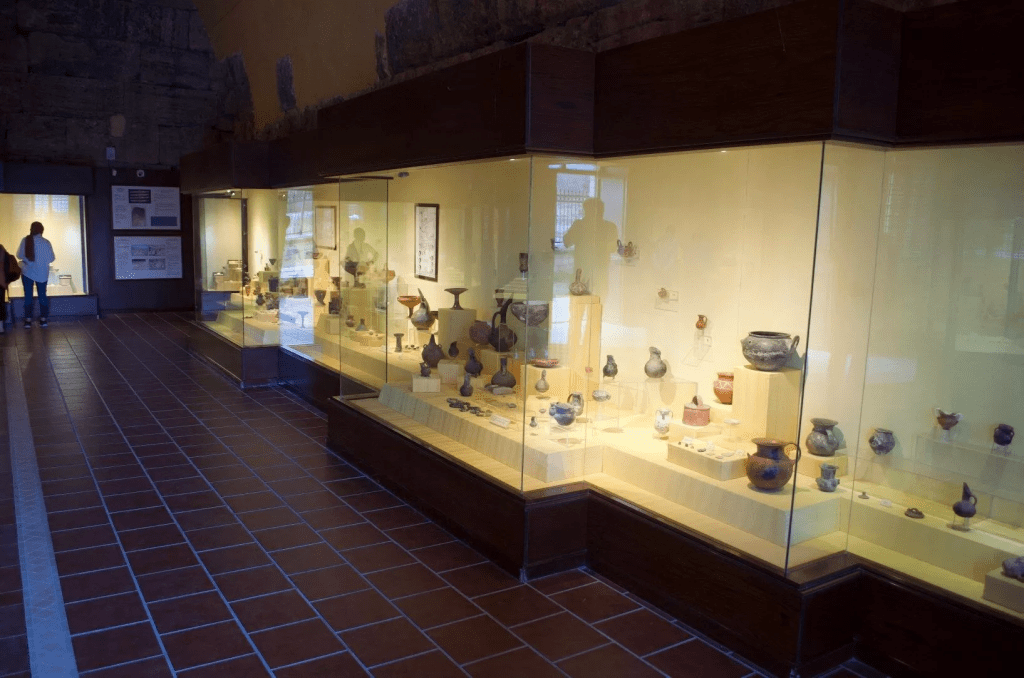
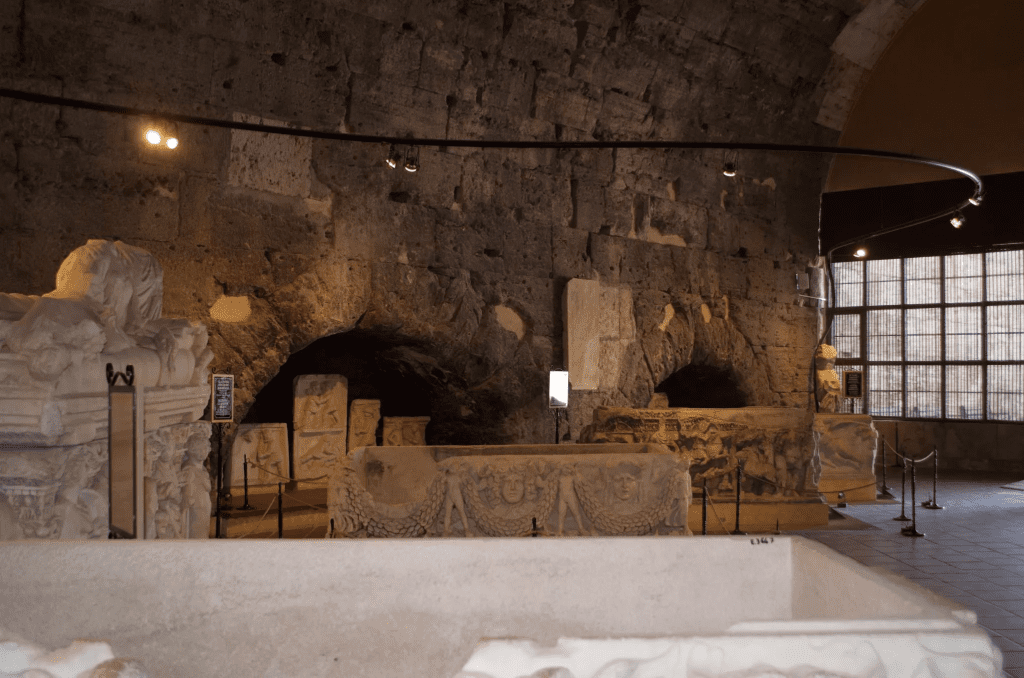
Hierapolis Archaelogy Museum
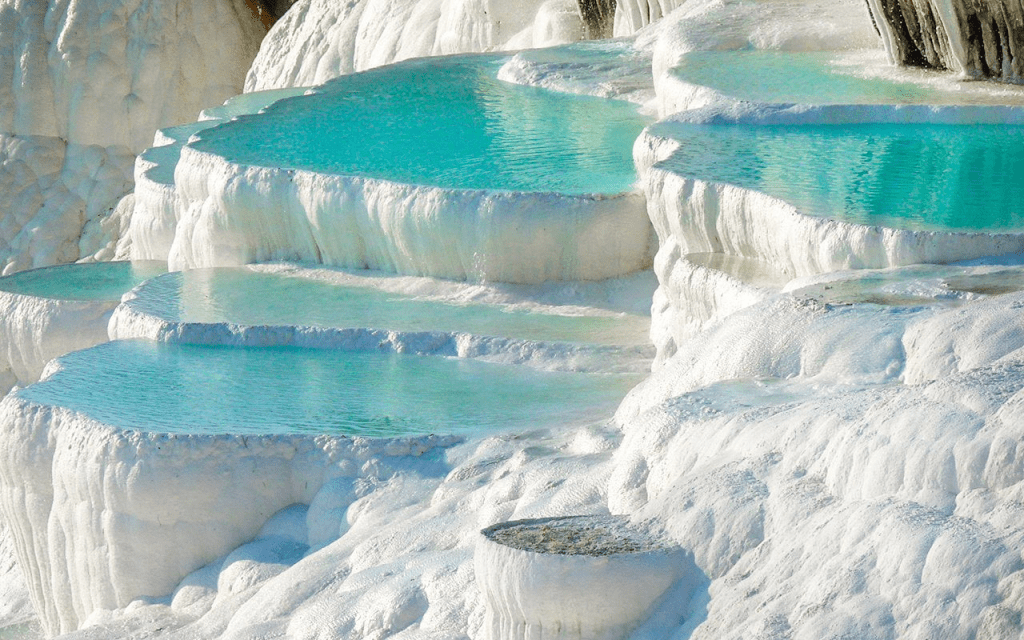
Travertines of Pamukkale
PAMUKKALE MOST POPULAR RESTAURANT
Bella Bar and Restaurants

White Heaven Restaurant
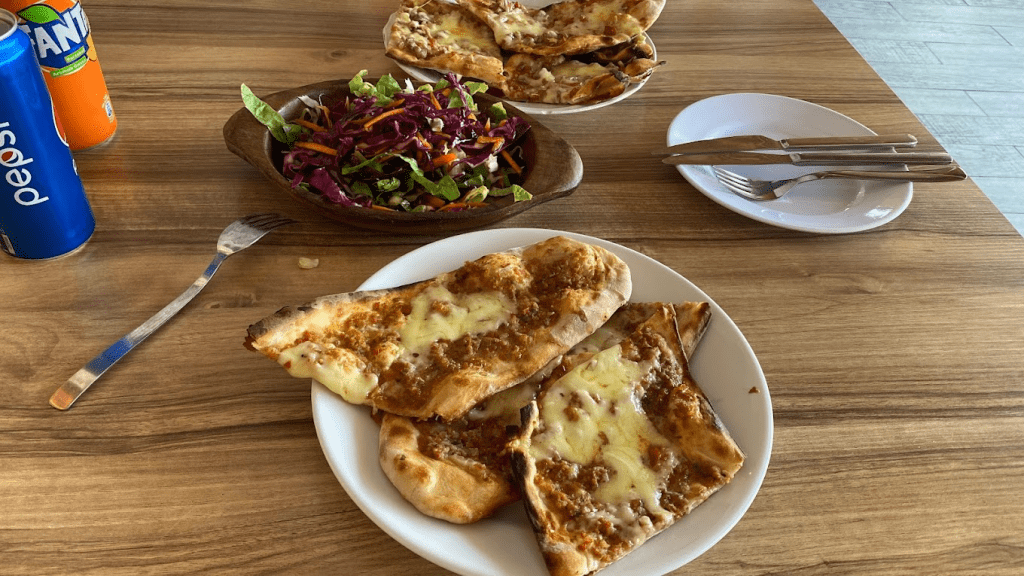
Tikir Grill Hause

White House Restaurant and Bar

Mustafa Restoran
THINGS TO DO IN PAMUKKALE AND ITS NEIGHBORHOOD
Stay in travertine. Dazzling white terraces are the main attraction of Pamukkale. There are many hot springs with a high content of iron and sulfur in the pools with white salt. Here you can also see the red rocks of Karakhait.
Rejuvenate in the pool of the Egyptian Queen Cleopatra, who understood the importance of cosmetic procedures. Bathing in the font of the queen, you will give your body rejuvenation and relaxation. Surprisingly, the columns of the portico, which once decorated its structure, are scattered at the bottom of the pool.
Heal yourself at the world-famous Pamukkale Thermal Baths. It has its own mineral water pool (temperature from +30°C to +45°C). Diseases such as rheumatism and skin diseases can be cured at the resort, as well as the digestive system. In addition, you can simply relieve stress and fatigue.
Walk in the ancient Hierapolis called the “Holy City.” It is located 17 km from the provincial town of Denizli on a hill. The Southern and Northern gates are the gateway to enter the site. There you will find ticket offices and a tourist center where you can find all the information you need. It is advisable to enter through the northern gate, as it is closer and will save you time. There are many monuments in Hierapolis: the Temple of Apollo and Pluto, the fountain house, the basilica, the Roman theater, the necropolis, the tomb of Flavius Zeuxis, and the street of columns.
Visit the Archaeological Museum. Who is loving history, will find many interesting exhibits here. Also, next to the museum, you will find an information center for tourists. You can get a free city map with all the sights and parks there.
Go to Laodicea, located near Pamukkale. It is true that only ruins remain of the ancient city, but tourists can take a look at the restored Kervansaray (the room where people and animals used to sleep during the nomadic trade).
Try the local cuisine. Near Cleopatra swimming pool, you will find several establishments where you can order different parts of lamb, dumplings, manti, and “köfte” – special cutlets that are served with vegetables. Turkish desserts (halva and baklava) will appeal to those with a sweet tooth. Also, try the local fast food – “kebabçi” and “denenerçi.” Kebabçi is lamb cooked like kebab. “Denerçi is served with bread or side dishes.
Buy a souvenir to keep as a memento. A traditional souvenir from Pamukkale is a bottle of mineral water. They are sold absolutely everywhere. But, there is a trick: grab a bottle from home and take the thermal water for free. In this region of Turkey, it is worth buying a cotton product. Not far from the terraces, in the town of Buldan, the textile industry has been very well developed since ancient times. The finest cotton clothing should be bought in Buldan itself, and there are the acceptable prices.
SOURCES: hurriyet.com.tr
planetofhotels.com
novo-monde.com


